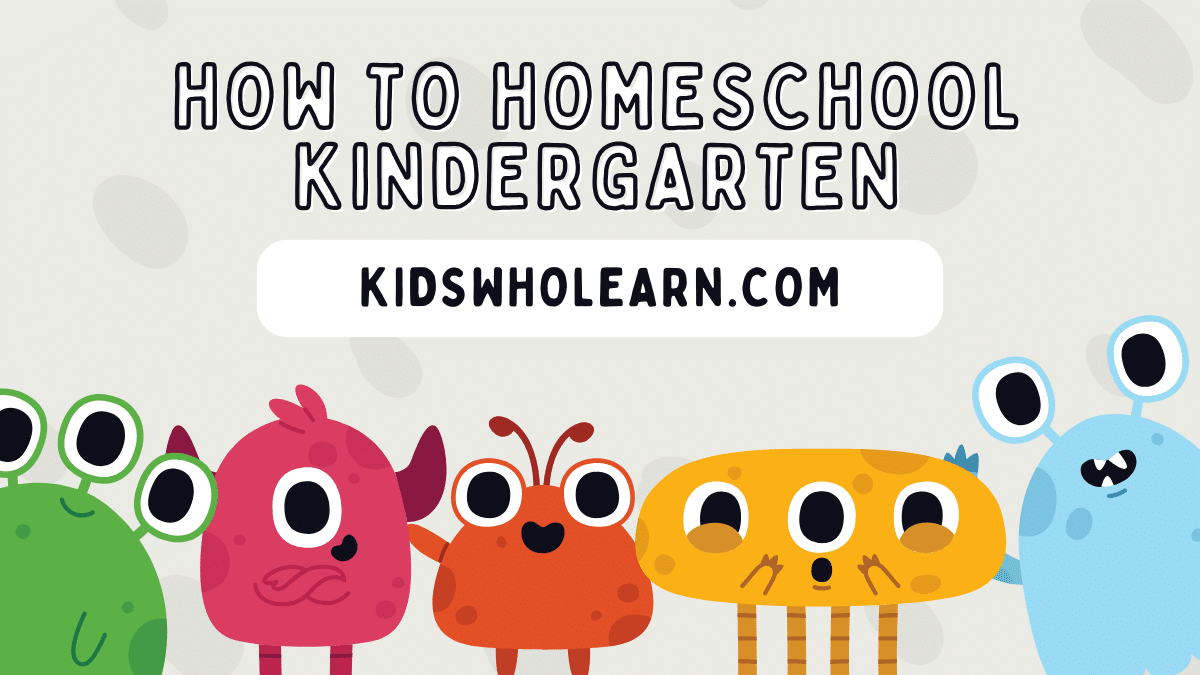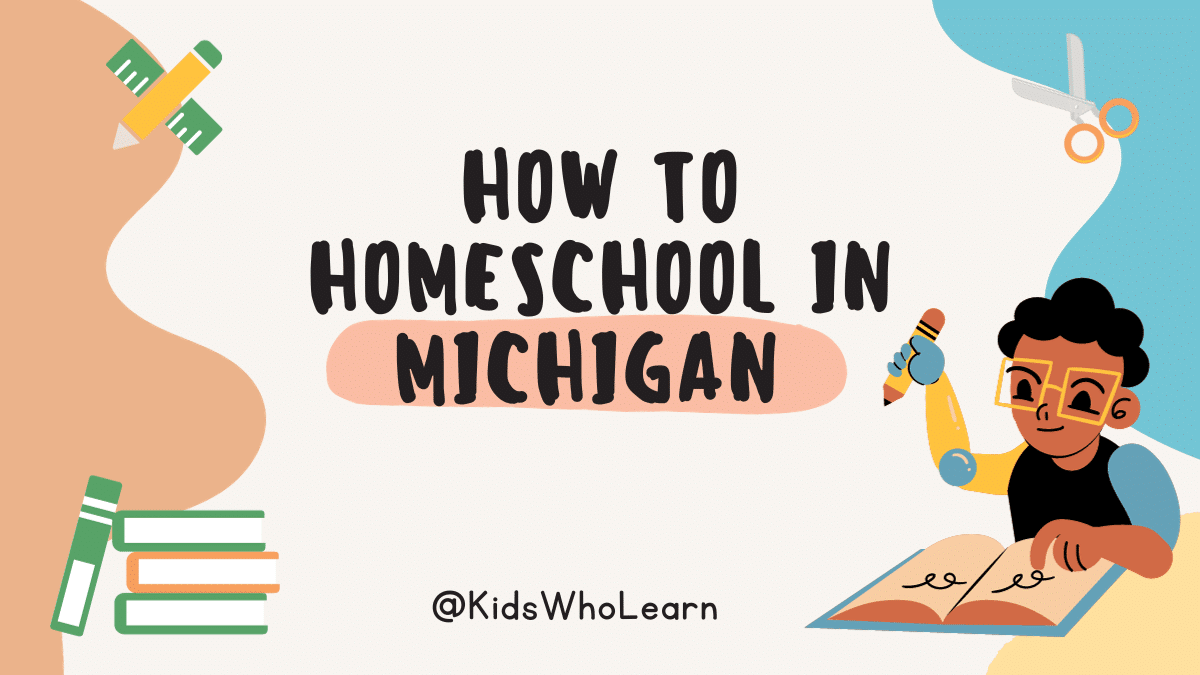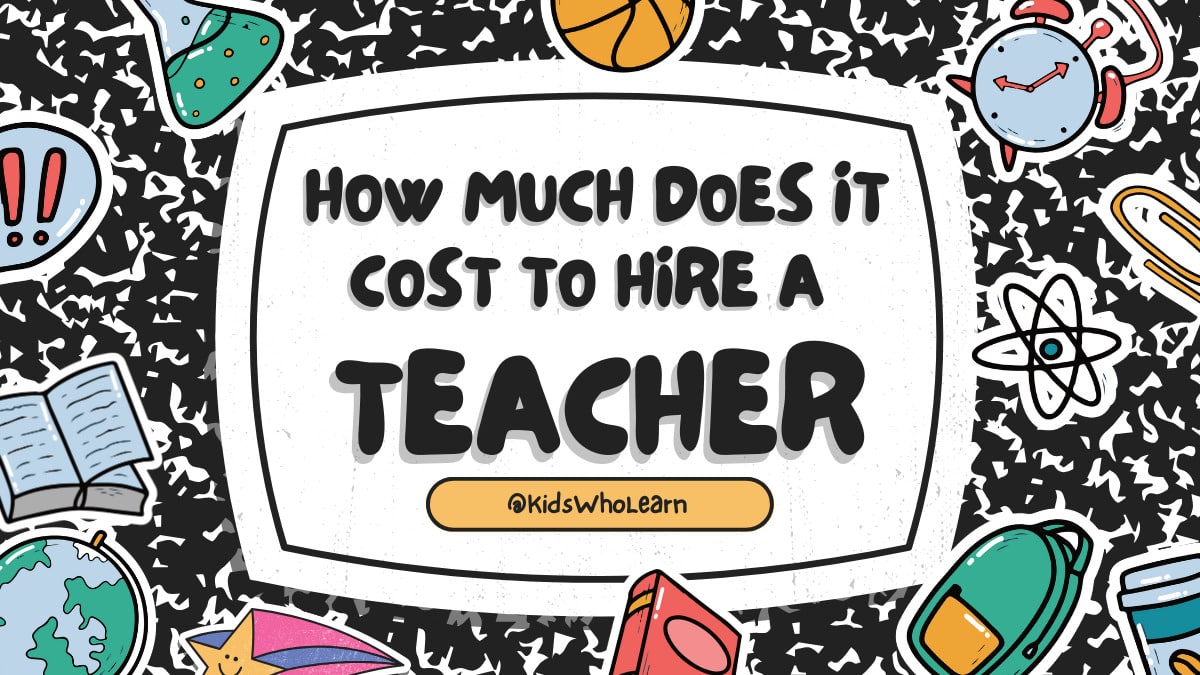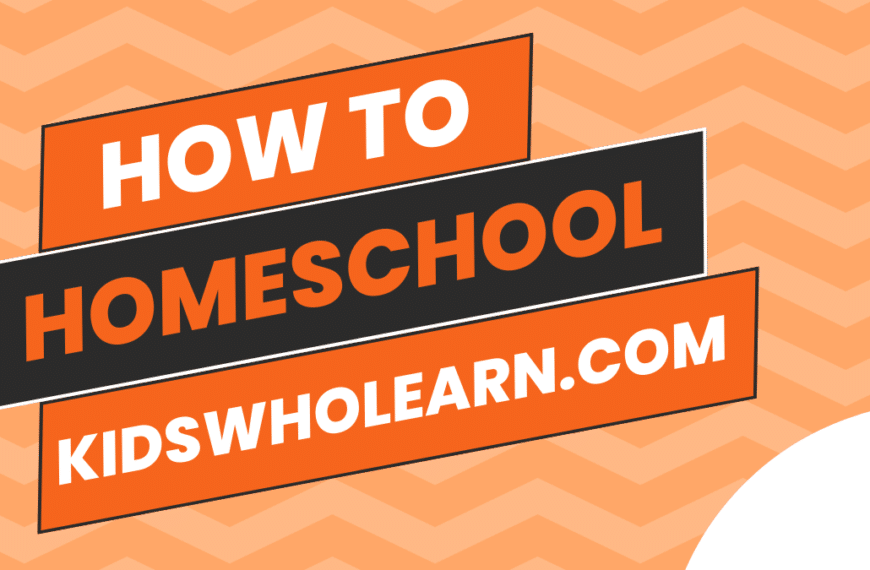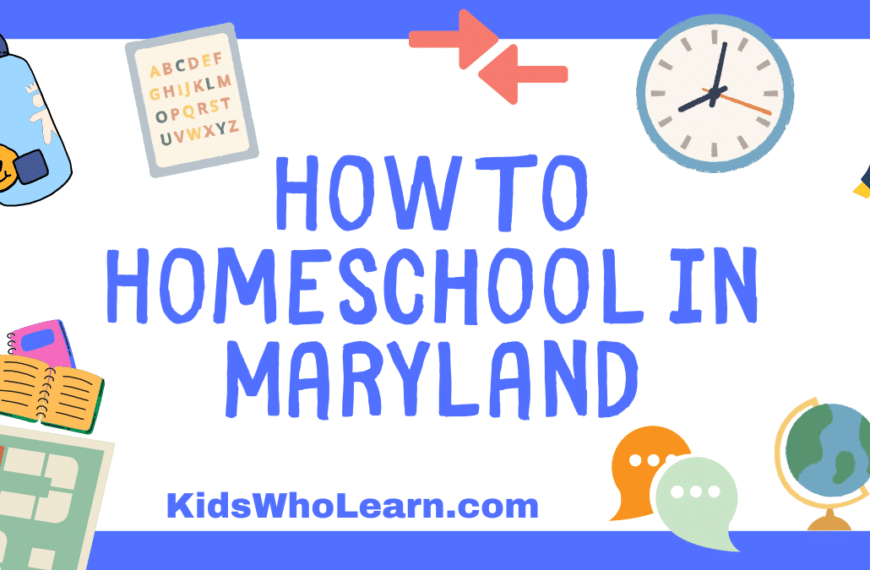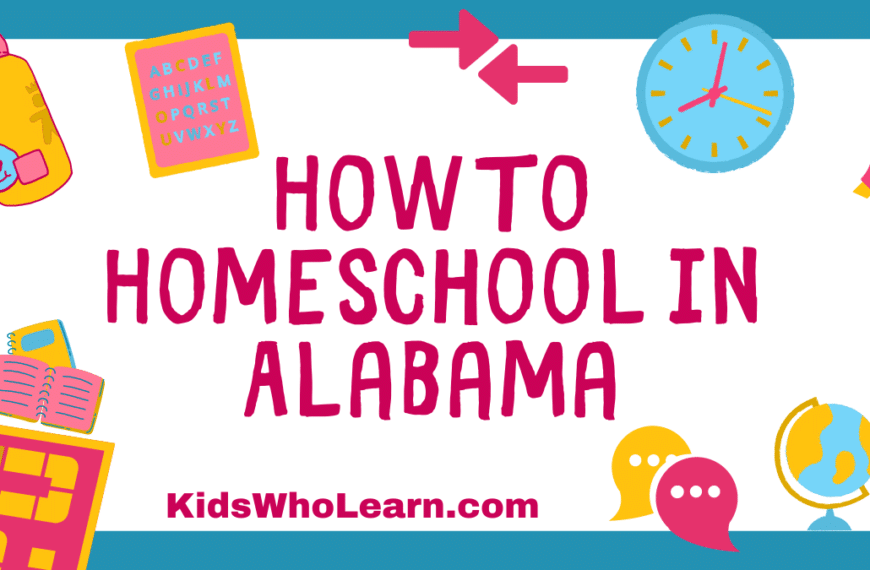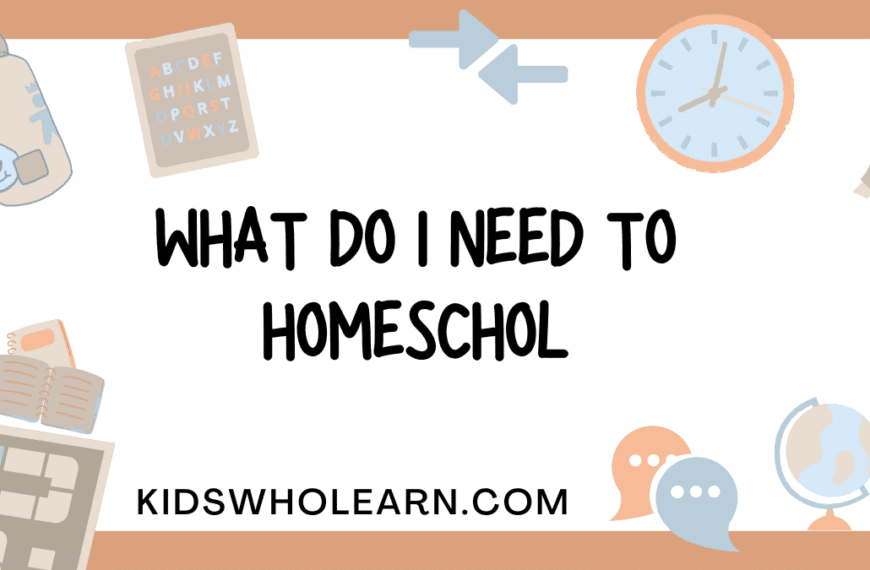Homeschool kindergarteners may seem like a daunting task, but it can also be a rewarding experience that brings you closer to your child. It offers a personalized, flexible, and fun learning environment, free from many of the constraints and limitations of traditional schooling. As a parent, you play a crucial role in your child’s early education. Properly preparing for and implementing a homeschooling plan for your kindergartener is essential to their success and your family’s homeschooling journey.
To get started, it’s important to understand the basics of homeschooling and be guided by your child’s learning needs. Being aware of the available resources and materials is essential when planning their daily schedule. Your routine should strike a balance between structure and flexibility, with a focus on enjoyable, educational activities. Prioritizing social interactions and regularly assessing progress will contribute to a well-rounded learning experience for your little one.
Key Takeaways
- Plan your homeschool journey by understanding the basics and evaluating your child’s needs
- Utilize resources and materials to create a structured daily routine with fun learning activities
- Prioritize social interactions and consistent progress assessment for a well-rounded education
Understanding Homeschooling
Homeschooling can be a rewarding and effective educational option for your kindergartener. As a parent, you are your child’s first teacher, and taking on this responsibility full-time can be a fulfilling experience.
To start homeschooling your kindergartener, you’ll first need to research the homeschooling laws in your area. These laws can vary by state or country, and may require you to submit specific paperwork or follow a certain curriculum. Make sure you familiarize yourself with these requirements so you can provide the best education for your child.
Next, explore different homeschooling methods and philosophies. Some popular options include Montessori, Charlotte Mason, and Waldorf-inspired approaches. By understanding these methods, you can tailor your child’s education to suit their needs and learning style. Remember, there’s no one-size-fits-all approach to homeschooling, so feel free to mix and match techniques to create a unique learning environment.
Once you’ve chosen an approach, consider your child’s individual needs and learning style. Some kindergarteners may thrive with a more hands-on, play-based curriculum, while others may benefit from a structured daily routine. Be flexible and responsive to your child’s needs as you develop lesson plans and activities.
Finally, don’t forget to connect with other homeschooling families. There are plenty of support groups, online forums, and social media communities dedicated to homeschooling. Connecting with other families can provide you with valuable insights, resources, and encouragement as you embark on your homeschooling journey.
By taking the time to understand homeschooling and preparing yourself for the journey, you’ll be well on your way to providing your kindergartener with a supportive and nurturing learning environment. Happy homeschooling!
Evaluating Your Child’s Needs
When considering homeschooling your kindergarten child, it is essential to evaluate their individual needs as each child has unique requirements and interests. Assessing their needs will help you create a personalized curriculum suitable for your child.
Start by analyzing your child’s learning style. Some children learn best through visuals, while others prefer auditory or kinesthetic methods. Pay attention to how they absorb and process information. Tailor your teaching approach accordingly to make their homeschooling experience efficient and enjoyable.
Next, identify key areas of interest for your child. Encourage their curiosity and natural enthusiasm by incorporating topics they are passionate about into your curriculum. For example, if your child loves animals, you can use animal stories and activities to teach various subjects.
Another crucial aspect is determining your child’s academic strengths and weaknesses. Regularly monitor their progress through assessments and informal observations. Address weak areas in the curriculum to ensure they build a solid foundation in all subjects.
Finally, consider your child’s social and emotional needs. Homeschooling can provide ample opportunities for socialization through playdates, sports teams, and other extracurricular activities. Remember to allow for unstructured play, as it is essential for your child’s overall development.
To sum up:
- Analyze your child’s learning style
- Identify their areas of interest
- Determine academic strengths and weaknesses
- Consider social and emotional needs
By evaluating your child’s needs, you can create an effective kindergarten homeschooling plan that is tailored to their unique interests and abilities. This will ensure a successful foundation for their lifelong learning journey.
Gathering Resources And Materials
Finding Appropriate Curriculum
When homeschooling your kindergarten child, it’s important to find an appropriate curriculum that covers the necessary subjects, such as reading, writing, math, and social skills. Here are some steps to follow in selecting a curriculum:
- Research: Start by exploring various curriculums online and look for reviews from other homeschooling parents.
- Consider Your Child’s Needs: Think about your child’s learning style and look for a curriculum that aligns with their strengths and interests.
- Standards: Ensure the curriculum meets your state or country’s educational guidelines for kindergarten.
Once you have chosen a curriculum, gather the required textbooks, workbooks, and materials to support your child’s learning journey.
Utilizing Online Tools
In addition to traditional resources, utilize online tools to enhance your child’s homeschool experience. Here are some popular options:
- Educational Websites: Websites such as ABCmouse, Starfall, and PBS Kids offer interactive games, videos, and activities that cover a wide range of kindergarten subjects.
- Apps: Many educational apps are available for smartphones and tablets that cater to kindergarten-level learning. Look for highly-rated apps, such as Reading Eggs, Mathseeds, and Teach Your Monster to Read.
- Online Courses: Platforms like Outschool and Udemy offer a variety of courses specifically designed for kindergarten-aged children. These courses often feature live classes, guided assignments, and expert teachers.
Remember, using these tools should complement, not replace, your chosen curriculum. By incorporating technology and digital resources, you can create a diverse, engaging, and enjoyable homeschooling experience for your kindergartener.
Creating A Structured Daily Routine
A structured daily routine is essential when homeschooling your kindergartener. It helps you establish expectations and maintain consistency for both you and your child. Keeping things friendly and engaging, here are some suggestions to create a daily routine for your homeschooling journey.
Start with a morning routine: Wake up at a consistent time and help your child get ready for the day. This could include getting dressed, brushing their teeth, and enjoying a healthy breakfast. Also, consider incorporating morning greetings or a simple “ready-to-learn” mantra to kick off the homeschooling day.
Plan different activities throughout the day: To keep your child engaged and interested, incorporate various activities. These can be a mix of academic and recreational:
- Reading and storytelling
- Writing and coloring
- Physical activity (such as playground time)
- Arts and crafts
- Math games
- Science experiments
- Music and dance
Make sure to tailor the activities to your child’s interests and learning preferences to foster their enthusiasm.
Incorporate frequent breaks: Regular breaks are crucial for maintaining your child’s focus and energy levels. Schedule multiple short breaks throughout the day, possibly after completing each activity. You can use these breaks for snacks, rest, or simple physical movement like stretching.
Establish a lunchtime: Just like when they are in a traditional school setting, having a set lunchtime helps maintain a sense of routine. Use this time to discuss the day’s progress with your child and encourage them to share their thoughts on their accomplishments.
End the day with a closing routine: At the end of the homeschooling day, have a closing routine in place. This may include tidying up the learning area, discussing what your child enjoyed or learned that day, and giving them a sense of closure. Additionally, making plans for the next day will help your child anticipate upcoming activities.
By following these friendly suggestions, you can create a structured and engaging daily routine that will make homeschooling kindergarten both enjoyable and productive for you and your child.
Incorporating Fun Learning Activities
Crafting And Art Projects
Encourage your child’s creativity by incorporating arts and crafts into your homeschooling routine. Provide a variety of materials, such as paper, paint, glue, and scissors, to allow them to explore different mediums. Some ideas for craft projects include:
- Paper plate animals: Have your child paint a paper plate and turn it into their favorite animal using cut-out shapes for ears, eyes, and mouth.
- Finger painting: Let your child explore colors and create unique pieces of art using their fingers instead of brushes.
- Homemade play dough: Make your own non-toxic play dough using a simple recipe of flour, water, salt, and food coloring. This can be used for endless sculpting fun and learning!
Remember to always supervise your child during crafting sessions to ensure their safety.
Educational Games
Incorporating educational games into your homeschooling routine can help reinforce essential kindergarten skills in a fun and engaging way. Here are some ideas for age-appropriate games:
| Game Idea | Skills Developed |
|---|---|
| Alphabet Bingo | Letter recognition |
| Number Memory | Counting and math |
| Color Sorting | Color recognition |
| Shape Puzzles | Shape identification |
You can find or create these games yourself to align with your child’s interests and abilities. For example, you could use their favorite cartoon characters in alphabet bingo. Tailoring the games to their interests can help keep your kindergartener engaged and excited about learning.
Ensuring Social Interactions
One concern often raised about homeschooling is the lack of social interaction for children. Don’t worry! There are plenty of ways to ensure your kindergartener gets the socialization they need. Follow these tips to keep your child engaged with their peers.
Firstly, find local homeschooling groups or co-ops in your area. These groups often organize playdates, field trips, and group activities for children of all ages, where your child can make friends and learn social skills alongside their academic lessons. Connect with them through social media or online forums.
Another option is to sign your child up for extracurricular activities like sports teams, dance classes, or art lessons. Such settings allow your child to interact with other kids, share experiences, and work together as a team.
Consider planning regular playdates with friends and neighbors who have kids of similar age. Playdates promote social growth and interpersonal skills while also providing a break from the schooling routine, which can be essential for your child’s emotional well-being.
Make sure to attend community events suitable for children. Your local library, museum, or recreational center may have seasonal events, workshops, and children’s programs that can help foster your child’s social development and create lasting friendships.
Finally, remember that socialization starts at home. Encourage your child to have conversations with family members, engage in group activities, and spend time with siblings, if they have any. These interactions can help them build a strong sense of belonging and form a solid foundation for future social encounters.
By actively incorporating these methods into your homeschooling routine, you can ensure your kindergartener has a well-rounded, socially-enriching experience.
Assessing Progress Regularly
It’s essential for you, as a homeschooling parent, to assess your kindergartner’s progress regularly. This will help you keep track of their learning and make necessary adjustments to your teaching methods. Let’s break down some ways to assess their progress.
Use informal assessments.
Informal assessments are a friendly and relaxed way to monitor your child’s progress. You can use practices such as asking open-ended questions about what they’ve learned, engaging in discussions about their understanding, or observing their interactions while playing with educational games. These methods will give you valuable insights into your child’s comprehension of the lessons.
Maintain a progress journal.
Recording your child’s progress in a journal is a great way to track their development. Jot down notes about their strengths, areas of improvement, and any significant milestones. This journal will serve as a reference point for both you and your child, allowing you to evaluate how far they’ve come and what areas require more attention.
Create portfolios of their work.
Collect samples of your child’s work, including drawings, writing samples, and crafts. Compile them in a portfolio to showcase their abilities. Reviewing these portfolios over time will give you a clear picture of their progress and help you determine if any adjustments need to be made to your teaching approach.
Set goals and monitor achievements.
It’s essential to set specific, measurable, and attainable goals for your kindergartner’s homeschooling journey. Revisit these goals frequently to evaluate their progress and celebrate their achievements—this not only helps assess your child’s development but also boosts their motivation and self-confidence.
Remember, assessing progress regularly is critical in shaping your kindergartner’s homeschooling experience. By using a combination of these methods, you’ll be able to monitor their growth and ensure you are providing the best possible education tailored to their needs.
Keeping Records
As you begin your homeschooling journey with your kindergarten student, it’s essential to keep accurate records. This may feel overwhelming at first, but don’t worry; you’ll soon find a system that works best for you and your family. Here are some friendly tips to help you get started.
First and foremost, familiarize yourself with your state’s homeschooling regulations, as they will dictate the specific records you need to maintain. In general, you’ll want to track your child’s attendance, assignments, assessments, and any other relevant educational activities. This information will serve as the foundation for your child’s academic progress.
Start by investing in a sturdy binder, file box, or digital organizational system to store all your important documents. Consider using color-coded dividers, folders, or digital labels to make it easier to locate specific materials when needed. For example:
- Yellow: Attendance and daily schedules
- Green: Assignments and completed work
- Blue: Assessments and evaluations
- Red: Field trips and extracurricular activities
Next, develop a consistent method for documenting your child’s learning activities. Some families prefer using a traditional calendar or planner, while others opt for a digital system like Google Calendar or an app specifically designed for homeschool planning. Whatever you choose, make sure you update it regularly to help maintain accuracy.
Additionally, keep a running log of the curriculum materials you use, the subjects you teach, and the learning objectives your child meets. This will help you easily evaluate your child’s progress and make necessary adjustments to their learning plan.
Remember, maintaining accurate records provides valuable insights into your child’s education and ensures you’re meeting all necessary legal requirements. By staying organized and consistent, you will set your homeschooling experience up for success.
Coping With Challenges
As you embark on your homeschooling journey, you may encounter some challenges while teaching your kindergartener. Don’t worry, you’re not alone, and many have faced similar difficulties. Here are a few strategies to help you cope with these challenges in a friendly and supportive manner.
Establish a routine: Consistency is vital for young children. Develop a schedule for each day, allotting time for learning activities, playtime, and relaxation. This will help to create a structured environment, making it easier for your child to thrive.
Stay patient and flexible: Learning can sometimes be met with resistance. Make sure to approach the situation with patience and understanding. If your child is struggling with a particular concept, try presenting it in a different way or taking a break and coming back to it later.
Find support from the homeschool community: Connecting with other homeschooling families can provide you with invaluable resources, advice, and encouragement. Look for local homeschooling groups or online forums to share experiences and find support.
Utilize various teaching methods: Different learners have different strengths. Some children use visuals to learn best, while others respond better to auditory or hands-on learning. Integrating various teaching methods will keep your child engaged and cater to their specific learning style.
Celebrate small achievements: Recognize and celebrate your child’s accomplishments, no matter how small they may seem. This will boost their confidence, keep them motivated, and remind both of you of the progress being made.
Lastly, remember that every child is unique and learns at their own pace. Trust your instincts and approach homeschooling with an open mind and a positive attitude.
Continuously Adapting Methods
As you begin homeschooling your kindergarten child, it’s essential to continuously adapt your teaching methods. Children at this age are constantly growing and changing, so it’s important to make adjustments according to their needs and interests.
One way to do this is by observing your child’s learning style and preferences. For instance, some children learn better through visual aids, while others prefer hands-on activities. By incorporating different teaching methods, you’ll be able to address your child’s unique learning style and keep them engaged in the learning process.
Another important aspect of adapting methods is by providing variety in the curriculum. In addition to the core subjects such as reading, writing, and math, consider integrating subjects like:
- Art: Encourage creativity with painting, drawing, or sculpting.
- Science: Explore basic concepts through fun experiments and observations.
- Physical Education: Keep your child active with games and sports.
- Music: Allow your child to experiment with instruments and learn basic rhythms.
Remember to be flexible with the pacing of the lessons. Young children can get easily overwhelmed, so try breaking down complex tasks into smaller steps. If your child is struggling with a concept, slow down and give them the extra support they need.
Lastly, make learning fun and engaging for your kindergartener. Incorporate games, songs, and storytelling to make the lessons more appealing. By creating a positive learning environment, you’ll help your child develop a love for learning and spark their curiosity in various subjects.
Frequently Asked Questions
What is the best homeschool curriculum for kindergarten?
There isn’t a one-size-fits-all answer to this question, as the best curriculum for your child depends on your family’s educational goals and preferences. Some popular options include Charlotte Mason, Montessori, and Waldorf methods. Research these methods and consider your child’s learning style, your educational philosophy, and available resources to find the best fit for your family.
How many hours should be spent on homeschooling kindergarten?
For kindergarten, it’s recommended to spend around 2 to 3 hours a day on structured learning activities. This includes a mix of reading, writing, math, science, and social studies. Remember to also incorporate breaks and unstructured playtime, which are essential for young children’s growth and development.
What essential supplies are needed for homeschooling kindergarten?
Some essential supplies for homeschooling kindergarten include:
- Pencils, crayons, markers, and other writing tools
- Paper for drawing, writing, and painting
- Age-appropriate books for reading and reference
- Basic math manipulatives like counting beads or pattern blocks
- Arts and crafts supplies for creative projects
- Educational games and puzzles to reinforce concepts
Don’t forget to create a dedicated learning space in your home that is organized and free from distractions.
How can I create effective lesson plans for homeschool kindergarten?
Begin by identifying your educational goals and objectives for your child. Break these down into smaller, manageable tasks and plan activities that align with your chosen curriculum. Be sure to include a variety of activities that cater to different learning styles, such as hands-on projects, educational games, and interactive lessons. Keep lessons short and focused, and reassess your plans regularly to ensure they meet your child’s changing needs.
Is there a difference in homeschooling kindergarten by state?
Yes, regulations and requirements for homeschooling can vary by state. Some states require you to submit formal notice of your intent to homeschool, while others might have specific curriculum requirements or standardized testing obligations. Be sure to research the homeschooling laws in your state to ensure that you’re in compliance with local regulations.
What are some accredited homeschool programs for kindergarten?
Several accredited homeschool programs cater to kindergarten students. These programs offer structured curricula, support from certified teachers, and access to various educational resources. Some well-known accredited homeschool programs for kindergarten include Acellus Academy, Time4Learning, and Calvert Education. Be sure to research each program’s accreditation, teaching methods, and resources to determine the best fit for your child’s needs.
What is the best homeschool curriculum for kindergarten?
There isn’t a one-size-fits-all answer to this question, as the best curriculum for your child depends on your family’s educational goals and preferences. Some popular options include Charlotte Mason, Montessori, and Waldorf methods. Research these methods and consider your child’s learning style, your educational philosophy, and available resources to find the best fit for your family.
How many hours should be spent on homeschooling kindergarten?
For kindergarten, it’s recommended to spend around 2 to 3 hours a day on structured learning activities. This includes a mix of reading, writing, math, science, and social studies. Remember to also incorporate breaks and unstructured playtime, which are essential for young children’s growth and development.
What essential supplies are needed for homeschooling kindergarten?
Some essential supplies for homeschooling kindergarten include:
- Pencils, crayons, markers, and other writing tools
- Paper for drawing, writing, and painting
- Age-appropriate books for reading and reference
- Basic math manipulatives like counting beads or pattern blocks
- Arts and crafts supplies for creative projects
- Educational games and puzzles to reinforce concepts
Don’t forget to create a dedicated learning space in your home that is organized and free from distractions.
How can I create effective lesson plans for homeschool kindergarten?
Begin by identifying your educational goals and objectives for your child. Break these down into smaller, manageable tasks and plan activities that align with your chosen curriculum. Be sure to include a variety of activities that cater to different learning styles, such as hands-on projects, educational games, and interactive lessons. Keep lessons short and focused, and reassess your plans regularly to ensure they meet your child’s changing needs.
Is there a difference in homeschooling kindergarten by state?
Yes, regulations and requirements for homeschooling can vary by state. Some states require you to submit formal notice of your intent to homeschool, while others might have specific curriculum requirements or standardized testing obligations. Be sure to research the homeschooling laws in your state to ensure that you’re in compliance with local regulations.
What are some accredited homeschool programs for kindergarten?
Several accredited homeschool programs cater to kindergarten students. These programs offer structured curricula, support from certified teachers, and access to various educational resources. Some well-known accredited homeschool programs for kindergarten include Acellus Academy, Time4Learning, and Calvert Education. Be sure to research each program’s accreditation, teaching methods, and resources to determine the best fit for your child’s needs.

